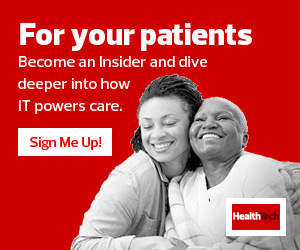What Is Healthcare Informatics, and How Is It Used?
ISACA advisor and media spokesperson Neil Lappage notes that “if you ask 10 different people about healthcare informatics, you’ll get 10 different answers.” That makes sense — as a burgeoning field, informatics is driven by both technology adoption at an organizational level and the integration of these solutions into healthcare workflows for frontline staff.
Lappage offers a succinct definition of the concept: “Healthcare informatics is the application of science in IT to better people’s health and improve healthcare.” By using solutions such as artificial intelligence and machine learning to better organize and analyze data, organizations can more quickly discover relevant patterns or isolate actionable information.
READ MORE: Find out the 3 nursing tech trends to watch in 2022.
“One example of this is a company using AI to scan people’s chests,” Lappage says. “They’ve been able to apply this technology to determine who has pneumonia and who might have early signs of COVID.”
Capturing and analyzing information as it’s being created and then comparing it to existing data sets makes near real-time decision-making possible to improve patient outcomes.
How Are Regulations Changing Health Informatics?
One of the biggest challenges in effective informatics is siloed data. As noted by Dr. Harley Eisman, chief medical officer of KixCare and medical director of pediatric emergency services at Montreal Children’s Hospital, “Most clinicians want more technology and more interoperability. One of the holy grails is to add capacity and enhance the patient experience, but we’re still chasing results and data and experiencing some of the fragmented nature of current healthcare.”
Efforts to deliver interoperability are on the rise. For example, the final rule of the 21st Century Cures Act will require healthcare agencies to provide all health data to patients upon request in 2022, in turn driving the need for agile and interoperable tech standards. The act’s information blocking rule, meanwhile, “prohibits Actors from undertaking any practice likely to interfere with, prevent, or materially discourage access to, exchange of, or use of electronic health information.”
The Big Three: Top Technologies for Health Informatics Success
It’s one thing to understand the role of informatics and recognize the evolving regulatory landscape, but what technologies underpin the success of information sharing at scale?
First is the cloud. To organize and manage data across disparate sources and formats, cloud solutions are critical.
“We need to be as collaborative as possible,” Eisman says. “So before we see patients, we can get as much data as possible around us. We need collaborative tools that help improve the initial visit but also the follow-up, that help improve patient-facing time and that help deliver expertise regardless of geography.”
AI is also critical. Analyzing large-scale data sets to determine patterns or trends simply isn’t possible without an assist from AI and machine learning tools.












